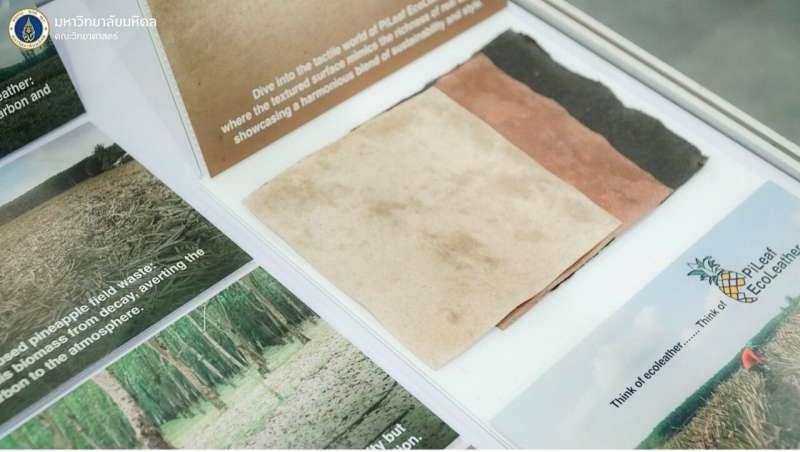In a significant breakthrough in sustainable materials science, researchers have developed a plant-based leather alternative using pineapple leaf fiber (PALF) and natural rubber (NR). This eco-friendly material promises to revolutionize the leather industry with its impressive strength and sustainability. The results are published in Sustainability.
The process begins with the extraction of pineapple leaf fiber from waste pineapple leaves through a mechanical method, showcasing a clever use of agricultural waste. The extracted fibers are then divided into two categories: untreated (UPALF) and sodium hydroxide-treated (TPALF) to widen the leather properties. These fibers are formed into non-woven sheets using a paper-making process, which are then coated with compounded natural rubber latex in various NR/PALF ratios.
To enhance the material’s properties, an adhesion promoter could be added. The resulting leather-like materials were rigorously tested for tensile properties, tear strength, and hardness, with their internal structures examined using a scanning electron microscope.
The study, led by Professor Taweechai Amornsakchai from Mahidol University, found that the leather alternative with an PALF/NR ratio of 50/50 was the most satisfactory, particularly the variant prepared from TPALF, which was softer and had greater extension at break. The inclusion of an adhesion promoter significantly enhanced the stress-strain curves of the materials.

Comparative analysis revealed that this newly developed PALF leather not only matches but often surpasses other alternative leathers reported in the literature. Notably, it exhibits much greater strength than leather alternatives made from mushrooms.
This innovative leather substitute is bio-based, plastic-free and boasts a lower carbon footprint, making it an attractive option for industries seeking sustainable materials. With its combination of strength, flexibility, and eco-friendliness, the PALF and NR-based leather could pave the way for a greener future in the fashion and upholstery sectors.
Professor (Associate/Reader) Kheng Lim Goh from Newcastle University in Singapore, the 2019 IULTCS Heidemann Lecturer, says that this PALF/NR leather is a game-changer in sustainable fashion, transforming pineapple leaf waste into eco-friendly leather. He believes that it could be embraced by apparel and furniture companies, as it offers a greener alternative to traditional leather without additional environmental costs.
More information:
Sorn Duangsuwan et al, Development of Green Leather Alternative from Natural Rubber and Pineapple Leaf Fiber, Sustainability (2023). DOI: 10.3390/su152115400
Provided by
Mahidol University
Citation:
Green leather: Innovative plant-based substitute developed from pineapple leaf fiber and natural rubber (2024, June 17)
retrieved 18 June 2024
from https://phys.org/news/2024-06-green-leather-based-substitute-pineapple.html
This document is subject to copyright. Apart from any fair dealing for the purpose of private study or research, no
part may be reproduced without the written permission. The content is provided for information purposes only.













/https://tf-cmsv2-smithsonianmag-media.s3.amazonaws.com/filer_public/d1/82/d18228f6-d319-4525-bb18-78b829f0791f/mammalevolution_web.jpg)






Discussion about this post